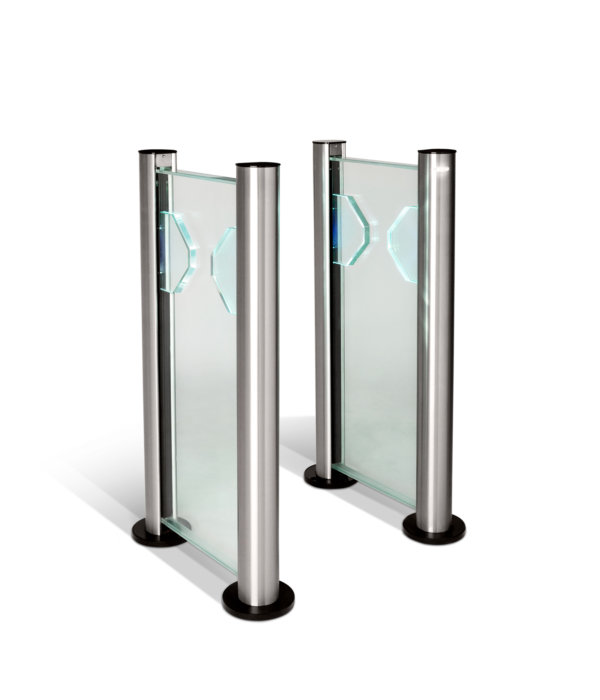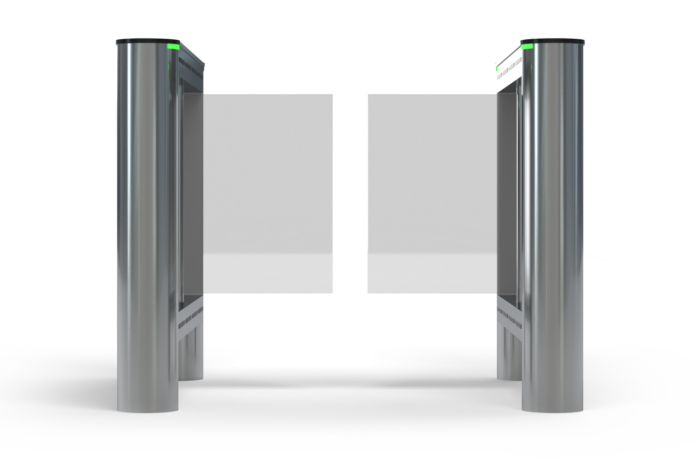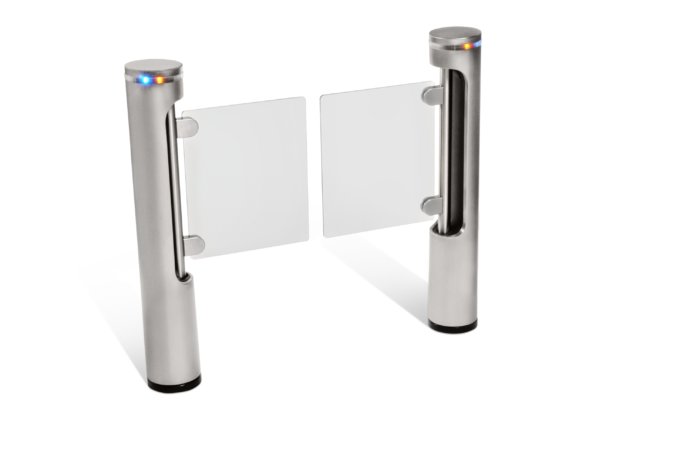There aren’t many aspects of physical security that are warm and inviting. In fact, none of it is intended to be inviting. Entrance control has evolved from primitive motes, or gates with sharp objects along the top, to innovatively designed steel and glass turnstiles, portals or revolving doors or even optical sensors. There is a delicate balance that must be considered in designing facilities that are aesthetically pleasing but must also consider the highest security standards.
Whether you are an end user, architect, or integrator for a new or existing facility, it’s important to understand all styles of barriers and the role that they play in a comprehensive entrance control strategy. Let’s review some of the most popular industry styles of security barrier, what they provide to a facility, and areas to be considered if they are best for your project.
Tripods
Tripod turnstiles are typically used in continuously manned industrial, covered outdoor or interior areas where appearance and throughput speeds are less important. They come in many sizes, shapes, and can be customized to become more aesthetically pleasing. Tripods can be manual, requiring the individual to push through the turnstile physically, or motorized. They are more restrictive for larger people or people with bags and are typically not ADA compliant.
Full-Height Mechanical Turnstiles
 While typically installed in or around externally fenced perimeters, full-height mechanical turnstiles are often found in unguarded areas of higher security sites. They are a good option for commercial and industrial facilities but are less appealing for most interior applications. Special ADA compliant arrangements, such as passgates, are needed since full-height turnstiles are typically not ADA compliant.
While typically installed in or around externally fenced perimeters, full-height mechanical turnstiles are often found in unguarded areas of higher security sites. They are a good option for commercial and industrial facilities but are less appealing for most interior applications. Special ADA compliant arrangements, such as passgates, are needed since full-height turnstiles are typically not ADA compliant.
Optical Turnstiles
One of the industry’s most modern options, optical turnstiles, has no physical barrier in the lane. They can detect unauthorized entrants or tailgaters with infrared beams that run between the pedestals and set off an alarm upon unauthorized intrusion. Optical turnstiles are generally used in lobbies of buildings that have lower security concerns and come in an array of sizes, shapes, and materials to complement almost any décor. Additionally, high-end optical turnstile providers like Fastlane® optical turnstiles feature a comprehensive catalog of technology integrations to extend the functionality and ROI of your turnstile.
 Speedgates
Speedgates
Speedgates are typically used in entrances where increased deterrence and deploying barriers to detain intruders is desired. Infrared beams across the lanes detect intruders, while barriers then impede or visually deter the intruder from entering, depending on the brand and style of barrier. Speedgates are generally used in high profile lobbies where medium to high security is desired.
There are three types of speedgates: swinging glass barrier, sliding glass barrier and drop-arm barrier. The swinging and sliding glass barriers are available in a variety of heights. ADA compliance is available in all three types, often minimizing the expense of separate manned passgates.
Passgates
 Passgates are generally used in manned reception areas for the passage of delivery carts, gurneys or wheelchairs. The glass gates usually open in either direction, are either motorized or manual glass, plastic or polycarbonate, and can typically be activated by security personnel. For higher security, Fastlane turnstiles also offer gates with infrared beams to ensure only one person passes per authorization. Without this added intelligence, other passgates are more susceptible to tailgating.
Passgates are generally used in manned reception areas for the passage of delivery carts, gurneys or wheelchairs. The glass gates usually open in either direction, are either motorized or manual glass, plastic or polycarbonate, and can typically be activated by security personnel. For higher security, Fastlane turnstiles also offer gates with infrared beams to ensure only one person passes per authorization. Without this added intelligence, other passgates are more susceptible to tailgating.
Entrance control security solutions like turnstiles can be a significant investment. Fastlane optical turnstiles are an essential component of a physical security strategy that blends functionality with design. Whether you are in the building planning process or making upgrades to your existing facility, design it to be smarter and more secure with the technologies available to you today.
The Foundation for Smart Entrance Control
A good physical security strategy starts with Smarter Security. Download our white paper on why smart buildings must incorporate smart entrance control to discover the essential solutions that blend functionality with design.

